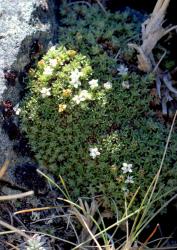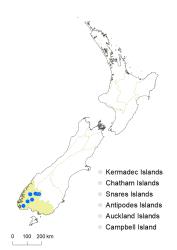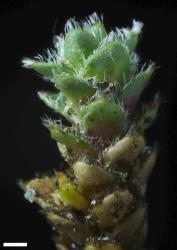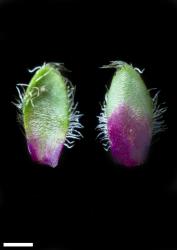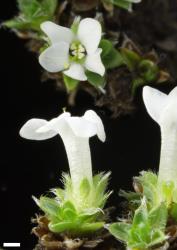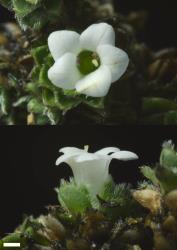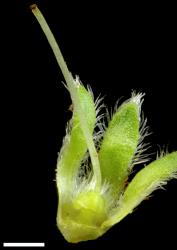- ≡ Pygmea ciliolata var. fiordensis Ashwin in Allan, Fl. New Zealand 1, 874 (1961)
- ≡ Veronica ciliolata var. fiordensis (Ashwin) Garn.-Jones in Garnock-Jones et al., Taxon 56: 577 (2007)
- ≡ Chionohebe ciliolata subsp. fiordensis (Ashwin) de Lange & A.Mark in Mark & de Lange, Above Treeline: Nature Guide Alpine N. Zeal., 280, 450 (2012)
Leaves 1.9–3.3 (sometimes 1.6) × as long as broad; margins sparsely to densely ciliate in lower half, ± glabrous above except for apical tuft. Bracts ciliate for whole length of margin. Calyx lobe surfaces sparsely to densely hairy for whole length; margins ciliate for whole length. Ovary and capsules hairy at apex.
South Island: Fiordland (eastern parts), Southland (western mountains).
Sub-alpine to alpine herb-field, cushion herb-field, fell-field, and tussock grassland, open stony ground, among rocks and boulders, on rock outcrops and in crevices, often on exposed ridges. Recorded elevations range from 1340 to 1830 m.
Also indigenous in Tasmania.
V. ciliolata subsp. fiordensis × spectabilis (Mark, Takitimu Range, OTA 31255).
V. ciliolata subsp. fiordensis × thomsonii: plants from Eyre Mountains may have sparse hairs in patches (resembling V. thomsonii) or scattered (resembling V. ciliolata) on the adaxial surface.
Flowers: November–January; fruits: December–March.
2n = 42 (Hair 1970).



